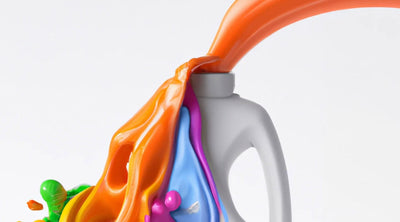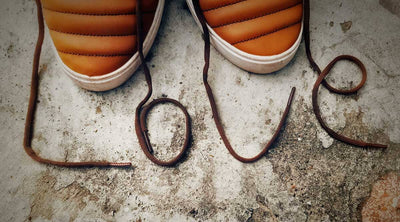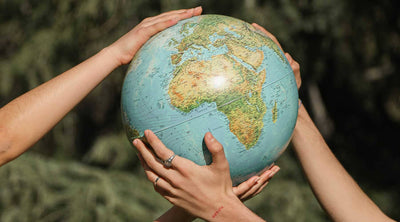Paper Books vs E-Books vs Other
juli 06, 2020The first version of a book (really a tablet with symbols) dates back to 3500 BC.
Books have provided an incredible opportunity to learn and tell stories. Such a beautiful thing that we tend to take for granted right? But have we ever thought about the environmental impact of books? And more specifically the paper and ink that books demand?
As we have learned in a previous blog post, the paper and pulp industry is responsible for numerous amounts of different pollution. Books are no exception. But giving up books isn’t very feasible, so are there more sustainable options out there?
Wouldn’t it be better to just have an E-book? One piece of technology that can store hundreds if not thousands of books in one?
Or maybe it would be better to use our laptop, phone, or tablet.
Like many things in the sustainability movement, the actions we take to better the planet can depend on our own personal lives. They are not the same across the board.
Everything, especially when it is a material thing, has pros and cons when it comes to the environment. So let’s get into those and then hopefully we can make a better decision for the most eco-friendly way to read.
Books
The bad
The paper and pulp industry is responsible for massive amounts of air pollution along with water consumption, water contamination, and energy demand.
Every book we purchase brand spankin’ new comes with a brand spankin’ new footprint as well. This footprint consists of carbon emissions (both in manufacturing and in ripping up carbon stores AKA: trees), energy demand, water consumption, water pollution, etc.
Books are also heavy and bulky, which means shipping and transporting them also creates more of a footprint. But they also tend to take up space in our lives, unless we regift them when we are done...which is highly recommended.
The good

There is a good side to books too. There is mounting evidence that we learn better from paper text rather than digital. However, the difference in absorption is still up for debate. Learning aside, we all have our preferences. And if we prefer the feel and appearance of books, then a physical book in itself is a great benefit.
Another good side to books is there is a lot of potential and room to reduce the footprint associated with physical text. Making books out of 100% recycled paper could be great. Or switching to a more sustainable material such as hemp. This material requires far less water and space compared to clear-cutting forests. I mean, up until the late 1800’s most paper was made from hemp anyways! So we already know how to do it!
E-Books
The bad
Like technology in general, there are a lot of raw materials that go into e-readers such as metals, plastics, glass, and more. All of these things, when created or mined, have an impact on the planet. Their processes are rather toxic and they pollute airways, water bodies, and demand resources.
The carbon footprint of an e-reader is said to be 100 times that of a regular paper book. And while this footprint could be negated by reading a certain amount of books before you replace the e-reader, it will take a lot of reading to do so.
E-readers can also tend to be more fragile than books. Dropping them could mean having to replace them with a new one, thus leading to an even bigger carbon footprint. Both from the toxic waste of the broken product, and the pollution to create a new one.
As discussed with paper books, e-readers can also be detrimental to our learning abilities or absorption of what we are reading, however slightly.
The good

Portable and minimalist! Hundreds of books can be readily available whenever we want them. We can search keywords if we need to reference back to anything, and we can do that from anywhere.
For traveling, or reading on the go, e-books provide a much lighter and compact experience all while not having to worry about finding a book store when on a trip. Because the bookstore is at our fingertips.
E-books also have potential to be made more sustainably, just as computers do. They also have a lot of potential to rely more on renewable energy sources in manufacturing, servers, and charging.
Using what we have

This could be things like a computer, a tablet, or even our phone.
Because we already have these things in our lives, there isn’t any additional footprint involved, other than maybe more battery use or server space.
This makes for an even more portable and minimalist experience since our products we own are becoming more and more multifunctional. Instead of a laptop, a phone, and a book or e-reader, it is just a laptop and phone. Or a tablet and phone. Or just a phone!
The size of a phone screen tends to be a big drawback, but in a pinch, or for the ultimate portability, it can be very effective.
All digital options come with the lower absorption potential and beyond that the lack of material aspects of paper books.
Buy used!

While of course not fully sustainable since buying used still relies on someone buying something new, buying used books (and regifting them) can be a great way to mitigate our reading footprint.
This can apply to both paper books and also e-books. What is great about e-books is there isn’t as much planned obsolescence going on, nor is there much technology advancement every six months like phones or computers. This makes buying used e-books or e-readers much easier and more worth the money.
Our local public libraries are an amazing way to attain used books. And all without the ownership, since we just give it back at the end. This makes for a more minimalist experience while being a more affordable and sustainable option.
So, I hope this left you with a good feeling about what you think you prefer. At the end of the day it comes down to our personal preferences and what works best for us.

Both e-readers and books have potential to become very sustainable products.
Push for books that are printed on hemp or recycled paper. Or try finding used or refurbished e-readers, especially since their technology doesn’t become obsolete very quickly.
No matter what we do, we are going to have a footprint. If buying a bunch of paper books feels more right for you, that is fine. It is simply something that you aren’t wanting to change. Instead, maybe we can focus our energy on something we wish to change such as our diet, transportation, or waste.
We pick and choose our battles and act more sustainably in certain areas so that we may temporarily indulge a bit in the things we can’t change as easily.
MORE Sustainability 101 ARTICLES View all ›
Ready to make
the switch?
- Powerful Cleaning
- Dissolves Easily
- Skin-Friendly
- Eco-Friendly
- No Mess














